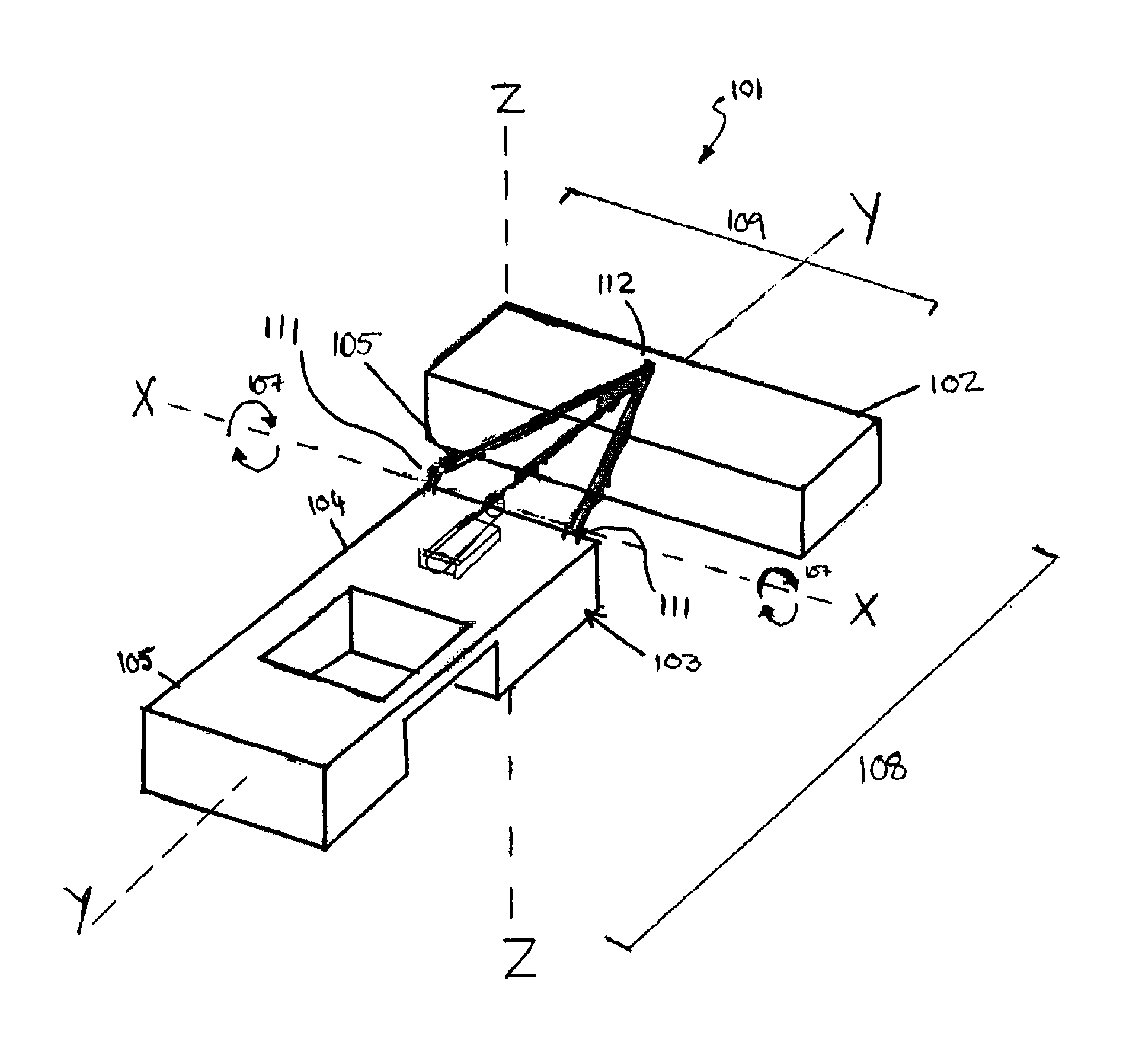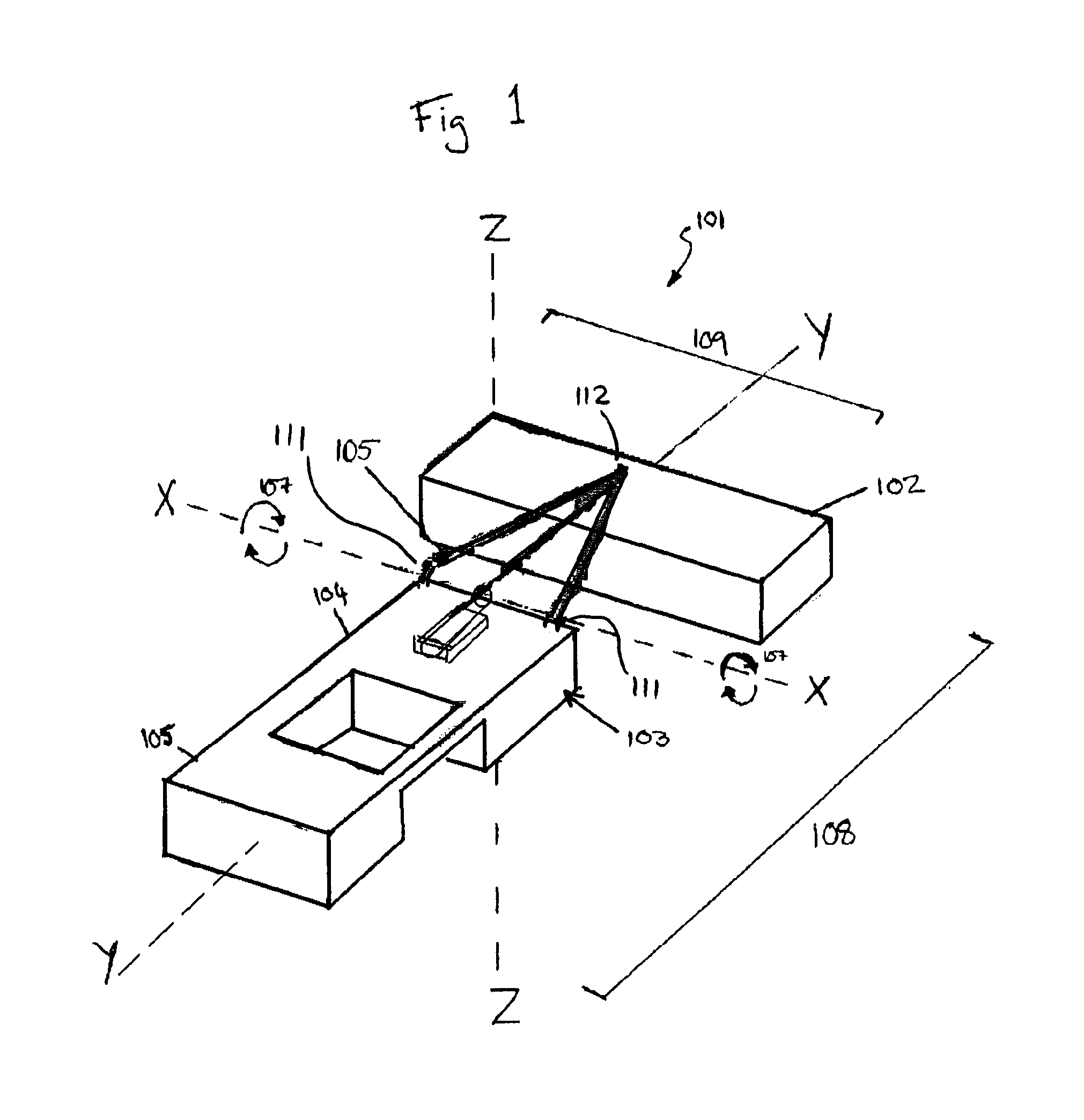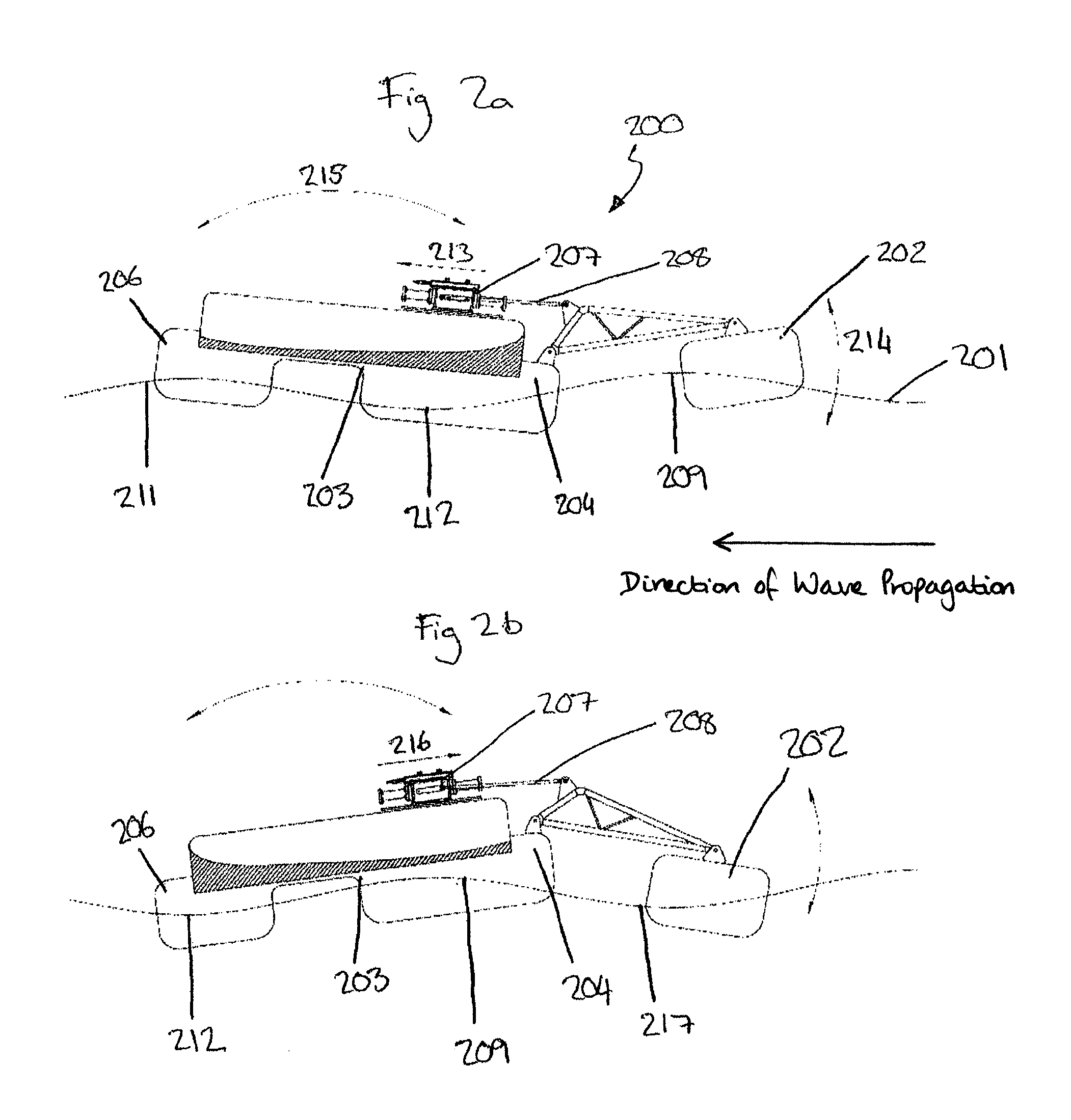Wave energy conversion device
a technology of wave energy and conversion device, which is applied in the direction of machine/engine, engine components, and sea energy generation, can solve the problems of inability to capture more than 50% of wave energy, movement of hydraulic actuators, and inefficiencies, and achieve the effect of improving efficiency and durability of the pump as a power take-off system, reducing frictional losses, and providing corrosion and erosion resistan
- Summary
- Abstract
- Description
- Claims
- Application Information
AI Technical Summary
Benefits of technology
Problems solved by technology
Method used
Image
Examples
Embodiment Construction
[0087]FIG. 1 illustrates a preferred embodiment of the Wave Energy Converter of the present invention suitable for offshore deployment. Wave Energy Converter 101 (hereafter referred to as WEC), is comprised of at least one forward pontoon 102, and a rear pontoon 103. In some embodiments, the rear pontoon 103 may comprise a central pontoon 104 immovably fixed to at least one outrigger pontoon 106. Forward pontoon 102, is pivotably attached to the rear pontoon 103 by way of drive arm 105. Drive arm 105 is attached to rear pontoon at points 111, and to forward pontoon at point 112. Drive arm 105 forms part of a power take-off (PTO) system as will be described in more detail below.
[0088]Forward pontoon 102 is preferably long and slender in dimension, such that its elongate axis may be aligned—when in use—parallel to the crest of oncoming waves (consistent in orientation with the X axis of FIG. 1), and perpendicular to the waves' direction of propagation (consistent in direction with the...
PUM
 Login to View More
Login to View More Abstract
Description
Claims
Application Information
 Login to View More
Login to View More - R&D
- Intellectual Property
- Life Sciences
- Materials
- Tech Scout
- Unparalleled Data Quality
- Higher Quality Content
- 60% Fewer Hallucinations
Browse by: Latest US Patents, China's latest patents, Technical Efficacy Thesaurus, Application Domain, Technology Topic, Popular Technical Reports.
© 2025 PatSnap. All rights reserved.Legal|Privacy policy|Modern Slavery Act Transparency Statement|Sitemap|About US| Contact US: help@patsnap.com



